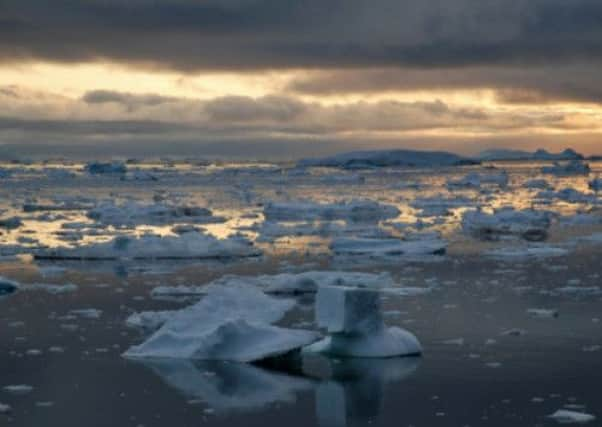Greenhouse gases at record levels, says UN


Figures published by the United Nations World Meteorological Organisation (WMO) show carbon dioxide levels rose more sharply in the past year than in the previous decade.
The WMO’s annual Greenhouse Gas Bulletin reports that long-lived gases such as carbon dioxide, methane and nitrous oxide have jointly contributed to a 32 per cent overall increase in warming – but carbon dioxide, mainly from fossil fuel emissions, accounted for 80 per cent of that.
Advertisement
Hide AdAdvertisement
Hide AdPresenting the bulletin in Geneva yesterday, WMO secretary-general Michel Jarraud blamed “human activities” for accelerating effects of global warming such as rising sea levels and melting ice caps.
“The observations from WMO’s extensive global network highlight yet again how heat-trapping gases from human activities have upset the natural balance of our atmosphere and are a major contribution to climate change,” he said. “As a result of this, our climate is changing – our weather is more extreme, ice sheets and glaciers are melting and sea levels are rising.”
He referred to findings in a recent assessment from the Intergovernmental Panel on Climate Change (IPCC) which showed atmospheric concentrations of the gas increased to levels “unprecedented in at least the last 800,000 years”.
Since the beginning of the industrial era in 1750, the average concentration of carbon dioxide in the atmosphere has jumped by 41 per cent, methane by 160 per cent and nitrous oxide by 20 per cent.
Only about half of human-induced carbon dioxide emissions remain in the atmosphere, while the rest are absorbed in the biosphere and oceans.
According to Mr Jarraud, the upward trend in the drivers of climate change make it harder to keep global warming from exceeding 2C by the end of the century – an international target agreed in 2009. “Every passing year makes the situation somewhat more difficult to handle,” he said. “It makes it more challenging to stay under this symbolic 2C global average.”
While daily measurements of atmospheric carbon dioxide exceeded the symbolic threshold of 400 parts per million in May this year, researchers from the WMO believe the global annual average concentration will cross this point in 2015 or 2016.
Levels of methane also reached all-time highs of 1,819 parts per billion last year, with concentrations rising since 2007 – after a period when they seemed to be levelling off.
Advertisement
Hide AdAdvertisement
Hide AdEmissions of nitrous oxide, from sources such as burning and fertiliser use, have also risen, with the concentration in 2012 reaching 325.1 parts per billion – 120 per cent higher than pre-industrial levels.
Although levels of atmospheric nitrous oxide are tiny compared with carbon dioxide, its warming effect is nearly 300 times as potent and it helps destroy the ozone layer.
Recent studies suggest the rise in emissions might be slowing, but the gases can remain in the atmosphere and influence climate change for hundreds – maybe thousands – of years.
Mr Jarraud said: “Limiting climate change will require large and sustained reductions of greenhouse gas emissions.
“We need to act now, otherwise we will jeopardise the future of our children, grandchildren and many future generations. Time is not on our side.”